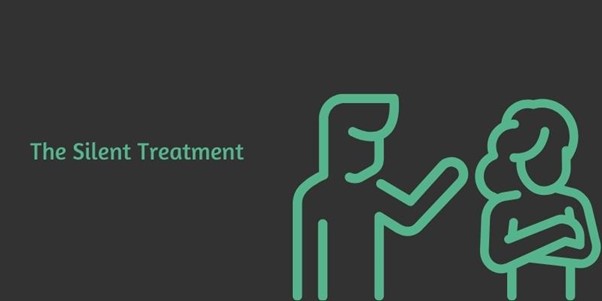
The Silent Treatment | Definition, Process, Effects, Reasons, Examples, How to Deal with it
Most people have experienced the silent treatment in a relationship at one point or another.
It’s a situation in which one person intentionally ignores or avoids communication with the other, often reacting to conflict or hurt feelings.
While it may seem harmless to cool off, the silent treatment can carry deeper implications for relationships.
At its core, the silent treatment is a form of non-verbal communication. Rather than directly addressing an issue, it creates a gap between individuals, leaving one to guess the cause of the behavior.
For the person giving the silent treatment, it might feel like a way to regain control or protect themselves from further emotional pain.
However, for the person on the receiving end, it can lead to feelings of rejection, confusion, or frustration.
When used repeatedly, the silent treatment can harm relationships, creating resentment or emotional distance over time.
While it’s natural to need space during conflicts, shutting down communication altogether can block resolution.
In this blog, we’ll explore the psychological effects of the silent treatment, its potential harm, and practical strategies for breaking this cycle and fostering open communication.
What Is the Silent Treatment?
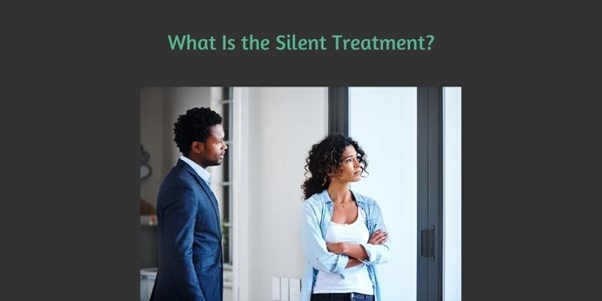
Silent treatment is a deliberate form of nonverbal communication in which one person ignores or refuses to engage with another, typically in response to conflict, hurt feelings, or anger.
It involves intentional interaction withdrawal, making the recipient feel excluded, ignored, or punished.
While silence can sometimes be used as a momentary pause to cool off during heated arguments, the silent treatment is different. It is often prolonged and serves as a method of expressing dissatisfaction or exerting control.
The silent treatment can manifest in various ways, from brief spells of silence lasting a few hours to extended periods of complete withdrawal that may stretch over days or weeks.
In some cases, it might involve simply avoiding eye contact or brief, curt responses, while in others, the person may entirely cut off communication, refusing to respond to calls, texts, or attempts at conversation.
The motivations behind the silent treatment can vary. For some, it is a way to avoid confrontation and sidestep emotional discussions they find difficult to handle.
Others may use it as punishment or manipulation, attempting to control or dominate the relationship dynamic.
In certain cases, it can be an unconscious reaction to feeling overwhelmed or hurt.
While it might seem like passive aggressive anger, the silent treatment can have a profound psychological impact, leaving the recipient feeling isolated, invalidated, or emotionally neglected.
Recognizing and addressing its root causes is crucial for maintaining healthy communication.
How Does the Silent Treatment Work?
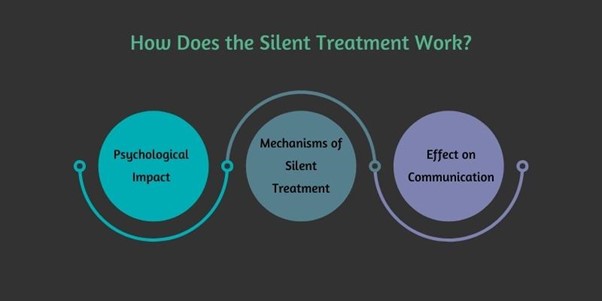
The silent treatment operates as a non-verbal way of expressing dissatisfaction, hurt, or anger.
It’s a coping mechanism for some individuals who feel overwhelmed or unsure of how to address conflict directly.
The silent treatment serves as both a defense and a weapon—it shields the person giving it from further emotional discomfort while simultaneously creating discomfort for the recipient.
Though it may seem passive, the silent treatment can profoundly impact relationships by fostering misunderstandings and emotional disconnect.
1. Psychological Impact
The silent treatment significantly affects both the giver and the receiver. The lack of communication can lead to confusion, frustration, and even feelings of rejection for the person receiving it.
They may feel powerless to resolve the situation or unsure of what caused the withdrawal in the first place.
This can trigger anxiety, self-doubt, and emotional distress, particularly in sensitive or insecure individuals.
On the other hand, the person giving the silent treatment may experience temporary relief or satisfaction from avoiding confrontation. However, this behavior can create guilt, resentment, or a growing sense of isolation over time.
While the silent treatment may feel like a way to regain control, it often results in deepened emotional divides.
2. Mechanisms of Silent Treatment
The silent treatment often arises from an inability to handle confrontation or express emotions effectively.
For some, silence feels safer than verbalizing anger, especially if they fear escalation. It’s a way to avoid vulnerability, as speaking openly about emotions can feel risky or uncomfortable.
Others may use it consciously as a manipulative tool to exert power or punish their partner for perceived wrongs.
While the silent treatment may provide temporary emotional relief for the giver, it prevents meaningful conflict resolution.
It often leaves issues unresolved and creates tension, making future communication even more difficult.
3. Effect on Communication
One of the most damaging effects of the silent treatment is its impact on communication. When one partner shuts down, it effectively halts any chance of resolving the conflict.
The recipient may hesitate to reach out for fear of further rejection, and the giver may become increasingly entrenched in their silence.
Over time, this destroys trust and openness, essential components of healthy relationships.
The longer the silence persists, the harder it becomes to re-establish productive dialogue, leaving both parties feeling misunderstood and disconnected.
Addressing this behavior is vital to restoring communication and strengthening the relationship.
Is Silent Treatment Abuse?
Moments of silence after a disagreement can occur naturally in any relationship. People may need space to process their feelings or avoid saying something hurtful in the heat of the moment.
This silent treatment is temporary and usually accompanied by mutual understanding or a return to communication once emotions settle.
Signs It’s Becoming Abusive
When silence is intentionally prolonged to avoid accountability, punishment, or manipulation.
If the silence makes the other person feel insignificant, unworthy, or confused about their role in the conflict.
Consistent use of silence to control the relationship dynamics rather than resolve disputes.
Psychological Manipulation
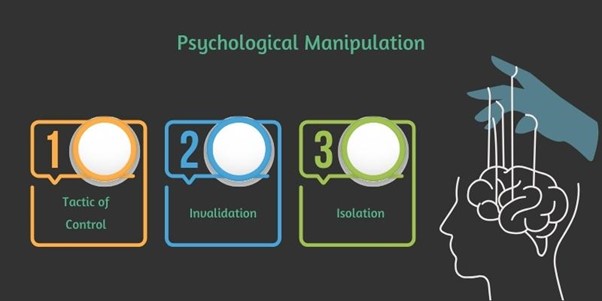
Silent treatment can become a form of abuse when it is intended to be used as psychological manipulation. Here are the main manipulation techniques:
1. Tactic of Control
The silent treatment can create a power imbalance, with one partner using silence to dominate the relationship.
The recipient often feels they must comply or apologize—regardless of fault—to restore communication.
2. Invalidation
The giver denies the recipient the chance to express their thoughts, feelings, or concerns, leaving them feeling ignored or dismissed.
This tactic can make the recipient feel invisible, unworthy, or unloved, reinforcing their dependence on the giver for validation.
3. Isolation
By withdrawing communication, the giver isolates the recipient emotionally, leading to feelings of loneliness and rejection.
This dynamic often prevents the recipient from seeking external support or sharing their concerns with others.
Effects on Mental Health
Here are the disastrous effect of silent treatment on the mental health of an individual:
- Increases anxiety, as they may constantly question their actions or words that led to the silence.
- Can lead to feelings of depression, self-doubt, and helplessness over time.
- Damages self-esteem, making them feel unworthy of love, respect, or attention.
- Encourages emotional avoidance, preventing them from developing healthy communication habits.
- Prolonged use of silence as a coping mechanism can isolate them emotionally as well, reducing overall relationship satisfaction.
When It Becomes Abuse
When the silent treatment is a frequent and deliberate tool to punish or control.
If it’s used as a recurring tactic to dominate or silence the other partner, rather than address or resolve issues.
1. Intent to Harm
The silence is inflicted to make the recipient feel powerless, guilty, or unworthy.
It becomes emotional abuse when it’s weaponized to dehumanize or systematically diminish the recipient’s self-esteem.
2. Impact Over Intent
Abuse is defined not just by intent but also by its impact on the recipient. If the silent treatment consistently harms the mental well-being of one partner, it crosses the line into abuse.
By recognizing the signs and patterns, individuals can distinguish between momentary conflict and a harmful dynamic, allowing them to take appropriate steps to address or escape abusive behavior.
6 Reasons Why Partners Use the Silent Treatment
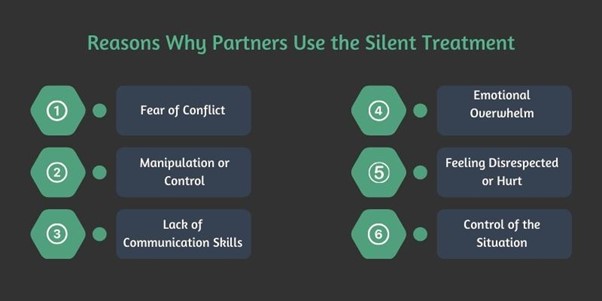
The silent treatment is often rooted in deeper emotional or psychological patterns. While some partners use it as a defense mechanism, others may use it as a deliberate tactic.
Understanding the underlying reasons can provide insight into this behavior and help address it constructively.
Here are common reasons partners resort to silent treatment:
1. Fear of Conflict
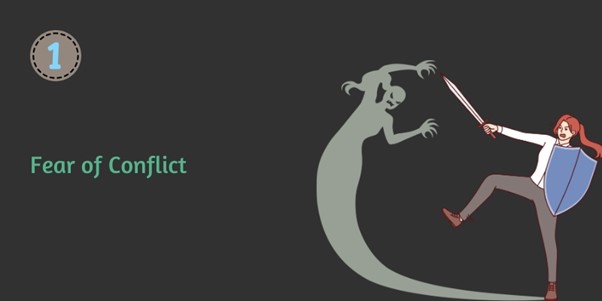
One of the most common reasons individuals use the silent treatment is to avoid conflict. Confrontation can be intimidating, as it often involves vulnerability and emotional exposure.
For some, engaging in a difficult conversation feels overwhelming, and silence is a safer alternative.
By shutting down communication, they avoid the discomfort of discussing sensitive topics. However, this approach often confuses or hurts the other partner, as the issue remains unresolved.
In addition, silence can result from emotional overwhelm. When anger, frustration, or sadness becomes too intense, a person may retreat into silence to manage their feelings.
Unfortunately, instead of expressing a need for space to process emotions, they may simply withdraw, creating a barrier to understanding. This behavior may also stem from a fear of vulnerability, where discussing issues openly feels too risky.
While silence may temporarily protect the giver, it hinders genuine resolution and deepens emotional distance.
2. Manipulation or Control
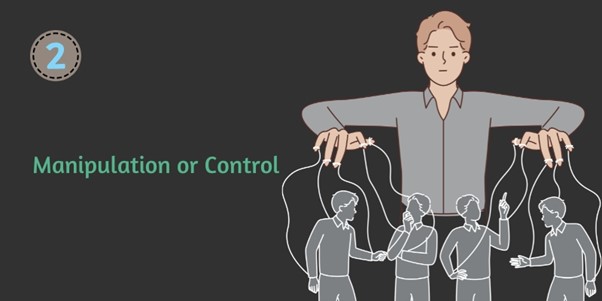
The silent treatment can also be a tool for manipulation or control in a relationship. Sometimes, silence is used deliberately to punish a partner for perceived wrongs. This tactic shifts the power dynamic, leaving the recipient in a state of confusion or guilt.
The partner receiving the silent treatment often feels compelled to apologize or make amends, even if they aren’t sure what they did wrong.
This behavior can also serve as a way to assert dominance in the relationship. The giver forces the recipient to meet their unspoken demands or prioritize their feelings by withholding communication.
Over time, this dynamic can create an imbalance of power, where one partner’s needs consistently overshadow the other’s.
While silence may seem like a simple response to conflict, when used manipulatively, it becomes a harmful pattern that damages trust and equality in the relationship.
3. Lack of Communication Skills
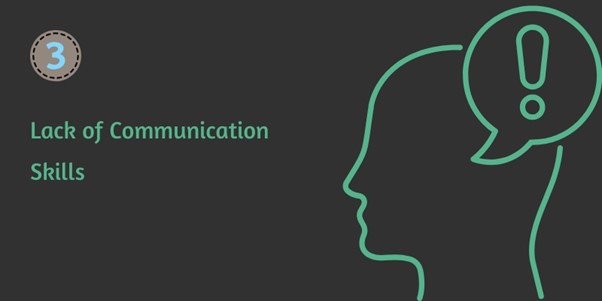
Sometimes, the silent treatment stems from a lack of communication skills.
People who struggle to articulate their feelings may choose silence over verbal expression, not out of malice but due to uncertainty.
They may fear saying the wrong thing or lack the confidence to express their emotions effectively.
This is especially common for individuals who grew up in environments where open communication wasn’t encouraged, leading them to adopt silence as a coping mechanism.
Moreover, some individuals mistakenly believe silence is a form of conflict resolution. They may assume that avoiding the issue will prevent escalation or that time will naturally heal the problem.
Unfortunately, unresolved conflicts often resurface, leaving both partners frustrated. While the silent partner may think they are diffusing tension, they inadvertently create more.
Addressing this pattern requires learning healthy communication techniques and understanding that silence rarely resolves deeper relational issues.
4. Emotional Overwhelm
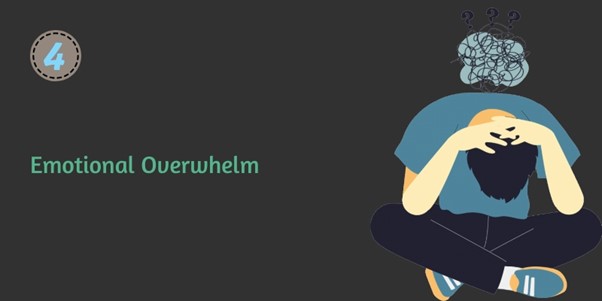
For some individuals, the silent treatment is less about manipulation and more about an inability to cope with emotional overwhelm.
When someone feels deeply hurt, frustrated, or confused, they may be unable to process or express their feelings verbally.
Instead, they withdraw as a form of self-protection. This retreat into silence can be an instinctive way to avoid saying something they might regret or to create a space where they can sort through their emotions privately.
While this reaction may temporarily relieve the person withdrawing, it can be deeply confusing and hurtful to their partner, who may feel shut out or dismissed.
The lack of communication leaves the underlying issue unresolved, creating a cycle where emotions continue to build without resolution.
Addressing emotional overwhelm requires self-awareness and learning to communicate needs without resorting to silence.
5. Feeling Disrespected or Hurt

The silent treatment is often a response to feeling disrespected or emotionally hurt. When someone perceives that their partner’s actions or words have crossed a boundary, they may use silence to signal their pain or dissatisfaction.
Unlike direct communication, this approach doesn’t require the giver to explicitly name the issue, which can feel safer for those uncomfortable with confrontation.
However, this indirect method often leaves the recipient in the dark, unsure of what caused the conflict.
While the silent partner may hope their actions will make their feelings known, this strategy can lead to miscommunication and resentment.
Effective resolution requires both partners to openly acknowledge and express their feelings, ensuring that misunderstandings are addressed and respect is restored.
6. Control of the Situation
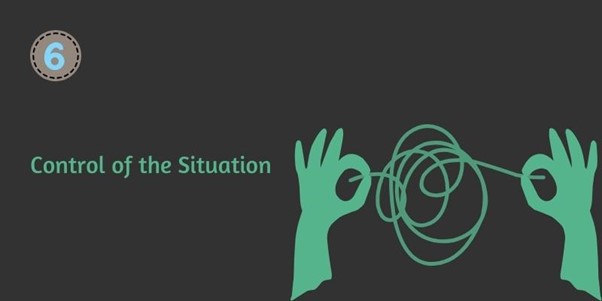
In some relationships, the silent treatment is used to control the situation or assert dominance.
By refusing to communicate, the silent partner creates a dynamic where the other person feels obligated to make amends or accommodate their needs. This tactic often leaves the recipient feeling guilty, confused, or desperate to restore harmony.
This form of silence shifts the power balance in the relationship, making the giver’s feelings or demands the central focus.
Over time, this pattern can erode trust and equality, fostering a dynamic where one partner’s emotions consistently overshadow the other’s.
While silence might seem like an easy way to regain control at the moment, it often deepens conflict and creates long-term damage to the relationship’s foundation.
Silent Treatment Examples
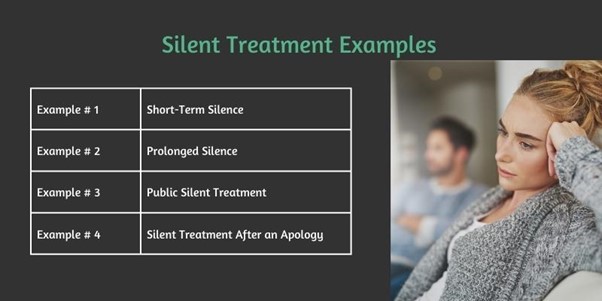
Silent treatment is a versatile form of nonverbal communication that manifests differently depending on the individuals and circumstances involved.
While it may appear as a temporary withdrawal in some cases, it can escalate to prolonged and more harmful patterns in others.
Understanding specific examples can help illuminate how silent treatment affects relationships and the different ways it can be experienced.
Let’s explore some common scenarios where the silent treatment may arise, offering insight into its varying forms and intensities.
Example 1: Short-Term Silence
In a heated argument, one partner may stop speaking for a few hours to calm down or gain clarity.
For instance, imagine a couple debating a sensitive topic like finances. One partner, feeling overwhelmed, chooses to step away without engaging further in the discussion.
While short-term silence can sometimes be beneficial, allowing emotions to settle, it must be appropriately communicated.
A statement like, “I need a little time to think about this; let’s talk later,” can prevent the silence from being misinterpreted as avoidance or dismissal. Without such communication, even a brief withdrawal can lead to confusion or rejection for the other person.
Example 2: Prolonged Silence
In some cases, silence lasts for days rather than hours. For example, after an argument about household responsibilities, one partner might refuse to speak, even sharing the same space, using silence as punishment or control.
Prolonged silence can create significant emotional strain on the person being ignored, making them feel isolated or undervalued.
It undermines healthy conflict resolution and often escalates the issue rather than addressing it. This behavior can foster resentment, damaging the relationship’s trust and communication.
Example 3: Public Silent Treatment
In social settings, the silent treatment can be particularly embarrassing. Imagine a scenario where one partner openly ignores the other during a dinner with friends, refusing to engage in conversation or acknowledge them.
This public display of silence can humiliate and isolate the ignored partner, especially when others notice the tension. Such behavior affects the immediate relationship and can strain the couple’s interactions with their social circle.
Public silent treatment can be particularly damaging, as it puts private conflicts on display without offering any resolution.
Example 4: Silent Treatment After an Apology
Even after one partner apologizes and attempts to mend the relationship, the silent treatment may continue.
For instance, after a disagreement about an offhand comment, one partner may apologize sincerely but be met with continued silence or indifference.
This type of silent treatment invalidates the efforts to repair the relationship, leaving the apologizing partner feeling helpless or undeserving of forgiveness.
It sends a message that no amount of regret or effort can bridge the divide, deepening frustration and sadness.
By recognizing these examples, individuals can better identify silent treatment patterns and their impacts, paving the way for more constructive communication strategies.
How to Deal with the Silent Treatment?
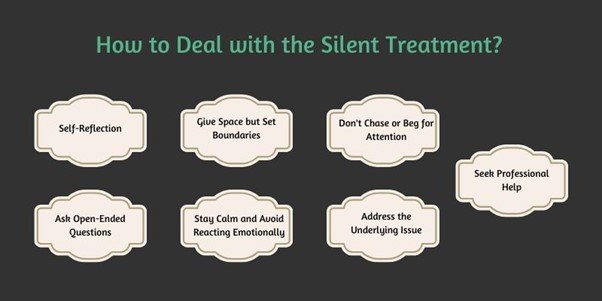
The silent treatment can leave you feeling confused, frustrated, and powerless. Whether you’re giving or receiving it, it’s important to approach the situation with patience and a mindset toward resolution.
Dealing with the silent treatment involves understanding its underlying causes, setting healthy boundaries, and promoting open communication.
By taking thoughtful and respectful steps, both parties can break the cycle of silence and work towards a healthier, more open relationship.
Let’s explore some key strategies for dealing with the silent treatment effectively.
1. Self-Reflection
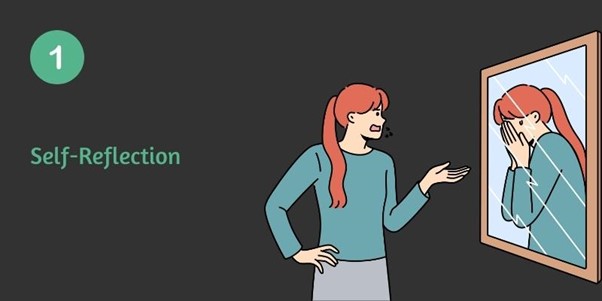
When faced with the silent treatment, the first step should be self-reflection. Before reacting impulsively, take a moment to assess the conflict.
Ask yourself what might have triggered the silence.
- Did something you say or do unintentionally hurt your partner?
- Are there unresolved issues or recurring patterns contributing to this behavior?
Self-reflection helps you gain clarity and prevents you from acting on anger or frustration. Instead of immediately reacting or demanding answers, consider how to address the core issue.
Understanding the other person’s perspective, even if they are silent, can help you respond empathetically and avoid escalating the situation.
Reflecting also allows you to evaluate your communication style, which may offer insights into improving future interactions.
If both partners take the time to self-reflect, they may better understand each other’s emotional needs and avoid misunderstandings.
2. Give Space but Set Boundaries
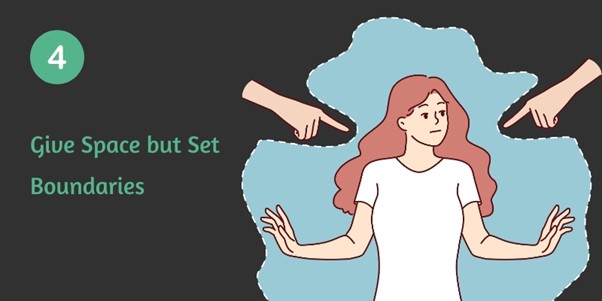
Respecting the need for space is crucial when using the silent treatment. Sometimes, both partners need time to cool down, process emotions, or gain perspective before re-engaging.
Giving space helps prevent further escalation and allows the silent individual to regroup.
However, it’s important to set boundaries during this period. While space is needed, it’s essential to communicate that silence should not become an indefinite shutdown.
Let your partner know you respect their time needs and value resolving the issue when ready.
For instance, you could say, “I understand you need some space right now, but I’d like to talk about this when you’re ready.”
Setting these boundaries ensures that both partners know the situation won’t be ignored indefinitely, helping to avoid prolonged emotional withdrawal.
The goal is to create a space where both individuals feel safe expressing their feelings and working towards a resolution.
3. Don’t Chase or Beg for Attention

It’s natural to want to break the silence and resolve the situation, but begging or chasing after the person using the silent treatment will likely worsen the situation.
This behavior can come across as desperation or put unnecessary pressure on the other person.
Rather than forcing a conversation, allow them the space to process their emotions.
Instead of pleading or chasing after your partner, stay calm and patient. Encourage an open, respectful conversation when your partner is ready to talk.
For example, let them know you are there to listen and resolve the issue by saying, “When you’re ready to talk, I’m here to listen and work through this.”
By resisting the urge to beg for attention or apologize prematurely, you maintain your self-respect and allow the relationship space to heal.
The goal is to encourage healthy communication, not to push for immediate resolution at the cost of emotional well-being.
4. Ask Open-Ended Questions
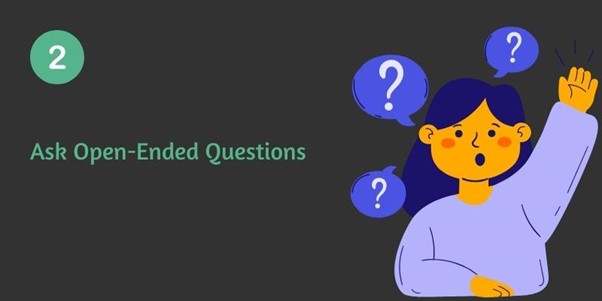
When the silent treatment has ended, and your partner is ready to communicate, it’s essential to approach the conversation with care.
One of the most effective ways to foster healthy dialogue is by asking open-ended questions.
Unlike yes/no questions, open-ended questions invite more thoughtful responses and encourage deeper exploration of feelings and concerns.
They can help prevent defensive reactions and create a more open atmosphere for both parties to express themselves.
Examples of open-ended questions include:
- “Can you tell me more about what’s been bothering you?”
- “How do you feel about what happened?”
- “What do you need from me to help resolve this?”
- “What would make you feel heard and understood right now?”
These questions encourage your partner to reflect and articulate their emotions, allowing you to understand each other more clearly. This can lead to productive conversations that address the underlying issues rather than focusing on surface-level grievances.
When you ask open-ended questions, it’s crucial to actively listen to your partner’s responses without interrupting. Validating their feelings and showing empathy will help them feel respected and heard.
Asking open-ended questions facilitates better communication and demonstrates your commitment to resolving the issue in a healthy, collaborative way.
5. Stay Calm and Avoid Reacting Emotionally
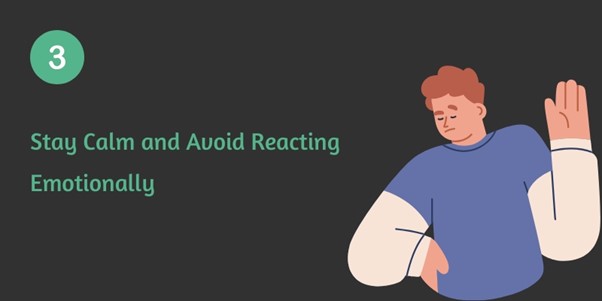
Remaining calm when confronted with the silent treatment is crucial for diffusing the situation and preventing it from escalating.
The instinct may be to mirror the silent behavior or react emotionally, but this can often worsen the situation.
If you respond with anger, frustration, or similar behavior, it might fuel further emotional withdrawal from your partner, deepening the silence and prolonging the conflict.
Instead, focus on staying composed. Take a deep breath and allow yourself time to process your emotions.
When you remain calm, you create an environment where productive communication can occur.
If you’re upset, expressing your feelings is essential when the time is right.
For instance, instead of raising your voice or demanding attention, calmly let your partner know your feelings without accusing them of anything.
You might say, “I feel confused and hurt by the silence, and I’d really appreciate it if we could talk this through.”
This approach creates a space where your partner feels less defensive and more open to resolving the issue.
Staying calm also allows you to avoid falling into unhealthy patterns of conflict, like stonewalling or passive-aggressive behavior.
It shows maturity and emotional control, helping to set the tone for future positive, solution-focused discussions.
6. Address the Underlying Issue
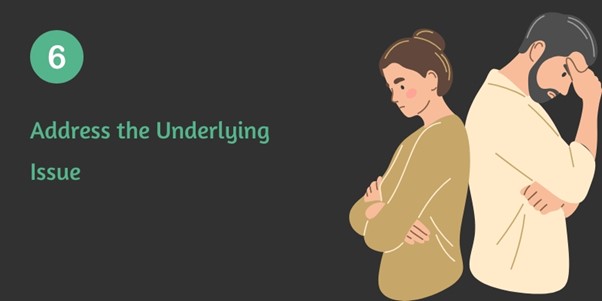
When the silent treatment is being used, it’s easy to focus solely on the silence itself, but it’s more important to address the underlying issue that triggered this behavior.
The silence is often a symptom of unresolved emotional conflict, frustration, or unmet needs.
Instead of focusing on the silence or the emotional distance, take the opportunity to dig deeper into what caused the situation in the first place.
It’s essential to approach the conversation with curiosity and a willingness to understand your partner’s perspective.
When both parties are ready to talk, ask open-ended questions that can help uncover the root cause of the conflict.
For example, you might ask, “Can you help me understand what happened that made you feel this way?” or “What can I do to make things better?”
By focusing on the root cause, you shift the conversation from a surface-level issue (the silent treatment) to the deeper emotions or concerns that led to it.
This allows both individuals to express their feelings, validate each other’s experiences, and work towards a resolution that prevents future conflicts.
7. Seek Professional Help

In some cases, especially when the silent treatment is used as a form of emotional manipulation or control, professional help may be necessary.
If the silent treatment becomes a persistent behavior that undermines trust and emotional stability or leads to emotional abuse, it’s important to seek external support, such as couples counseling, anger management classes, or therapy.
A trained therapist can help both partners understand why the silent treatment is happening and provide tools to constructively improve communication and resolve conflicts.
Therapy can also help both individuals explore any underlying emotional issues, past experiences, or communication patterns contributing to this behavior.
The therapist can guide the couple in setting healthy boundaries, learning how to express emotions openly, and developing more effective conflict-resolution strategies.
Couples counseling can also address any deeper issues in the relationship, such as feelings of neglect, distrust, or emotional manipulation, that might be driving the silent treatment.
By seeking professional help, you can break the cycle of silence and address relationship issues in a healthy, productive way, ultimately strengthening the bond between both partners.
Conclusion
The silent treatment is a common yet complex form of communication in relationships. It involves deliberately ignoring or refusing to communicate with a partner, often in response to conflict or emotional overwhelm.
While it can offer temporary relief for some, the silent treatment can lead to emotional harm, create confusion, and shut down meaningful dialogue.
It’s important to recognize when silence becomes a form of emotional manipulation or control, mainly if used repeatedly to punish or isolate a partner.
Rather than allowing silence to escalate, focusing on understanding, empathy, and direct conversation can help facilitate healing.
Open and respectful communication fosters emotional intimacy and resolution, helping partners move forward stronger and more connected.
If you or your partner are experiencing the silent treatment, consider seeking professional guidance from a therapist or counselor.
Learning to express feelings constructively and practicing active listening can resolve underlying tensions and build a healthier relationship dynamic.





Responses